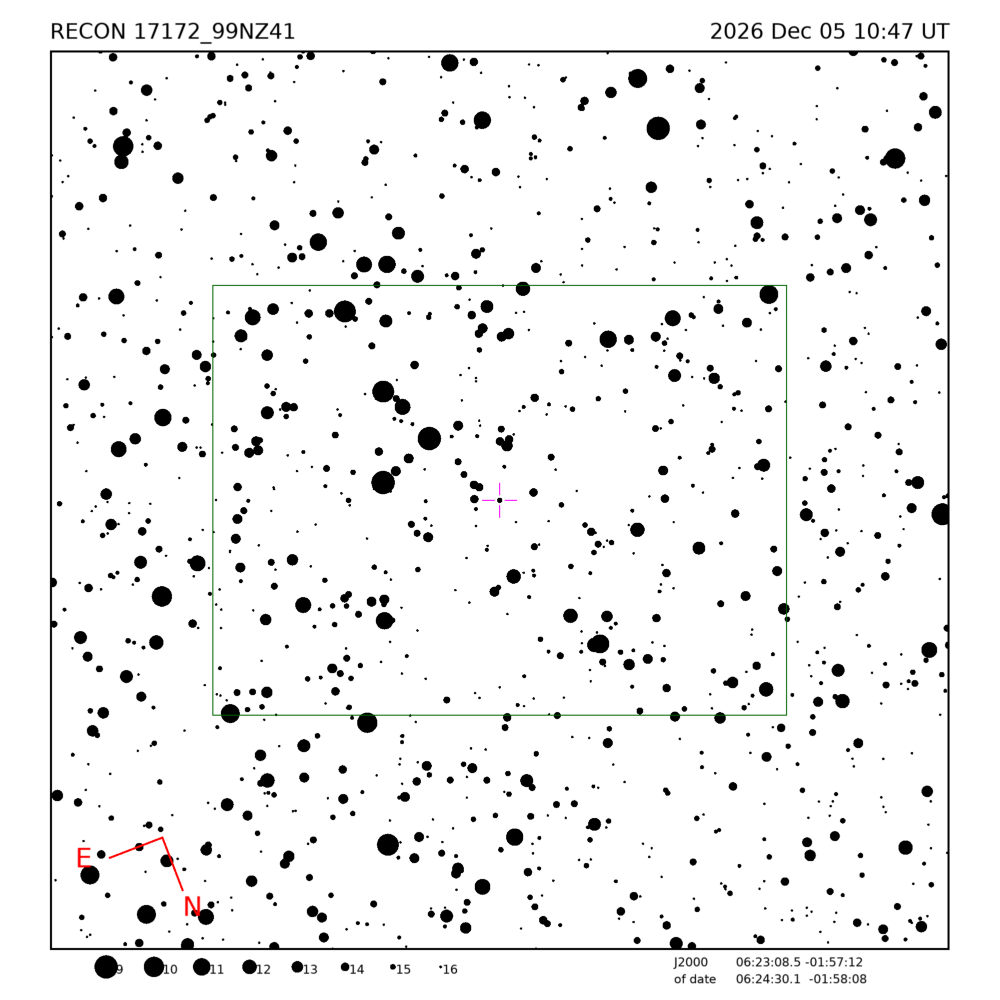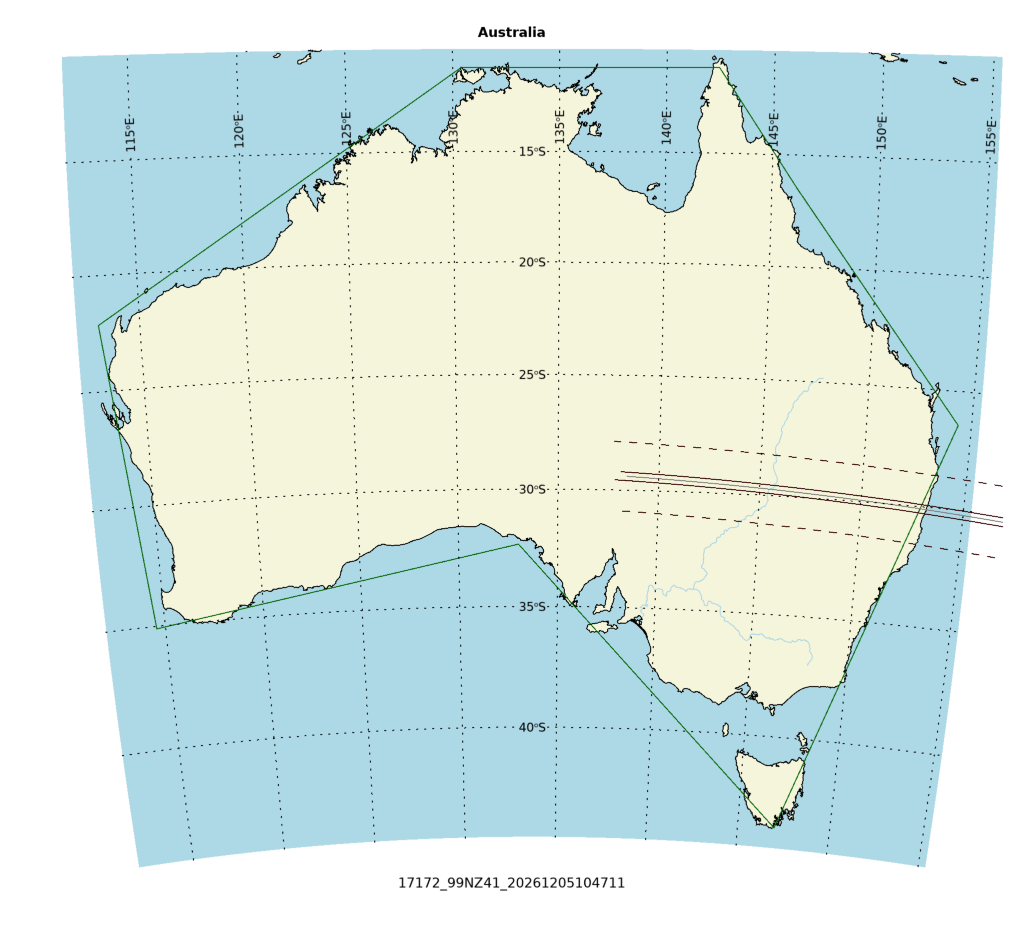
Occultation event with (17172) 99NZ41, event index number 5048
Regions able to see the event: Australia
Geocentric closest approach at 2026/12/05 10:47:11 UTC
J2000 position of star is 06:23:08.5 -01:57:12
Equinox of date position of star is 06:24:30.1 -01:58:08
Star is 112 degrees from the moon. Moon is 12% illuminated.
Stellar brightness G=15.5, apparent brightess of occulting body is G=15.9
Use an exposure time of 0.50 seconds with the standard RECON-QHY system.
SNR of 4.3 per integration for unocculted signal
Expected flux drop is 59% with SNR of 2.5 for the occulted depth (per occulted point)
Apparent velocity is 15.9 km/sec on the sky relative to the star, or, 18.0 arcsec/hr.
Position angle of asteroid motion is 92.6 degrees
The recommended exposure time corresponds to 8.0 km per image.
The 1-sigma error in the time of the event is 0.8 seconds.
The 1-sigma cross-track error in the shadow position is 41.1 km.
The sky-plane scale is 3188.0 km/arcsec.
Diameter estimates:
40.9 km assuming a 5% albedo, maximum of 2.6 sec for a central chord
16.7 km assuming a 30% albedo, maximum of 1.0 sec for a central chord
Cross-track diameter of 34.5 km used for deployment plan.
Star training set for 17172_99NZ41, (2026/12/05 10:47UT) Object RA Dec mag sep mel Betelgeuse 05:56:37.8 +07:24:35 0.4 11.67 121 Saiph 05:49:02.1 -09:39:43 2.1 11.70 117 PPM 176266 06:28:01.4 -01:31:31 5.9 0.99 111 PPM 176252 06:25:55.9 -01:26:06 6.7 0.64 112 PPM 176234 06:23:56.6 -02:06:44 9.6 0.20 112 17172_99NZ41 06:24:30.1 -01:58:08 15.9 111 Positions are for equinox of date


Star training set for 17172_99NZ41, (2026/12/05 10:47UT) Object RA Dec mag sep mel Betelgeuse 05:55:10.3 +07:24:26 0.4 11.67 121 Saiph 05:47:45.4 -09:40:11 2.1 11.70 117 PPM 176266 06:26:39.6 -01:30:27 5.9 0.99 111 PPM 176252 06:24:34.0 -01:25:07 6.7 0.64 112 PPM 176234 06:22:35.1 -02:05:49 9.6 0.20 112 17172_99NZ41 06:23:08.5 -01:57:12 15.9 112 Positions are for J2000